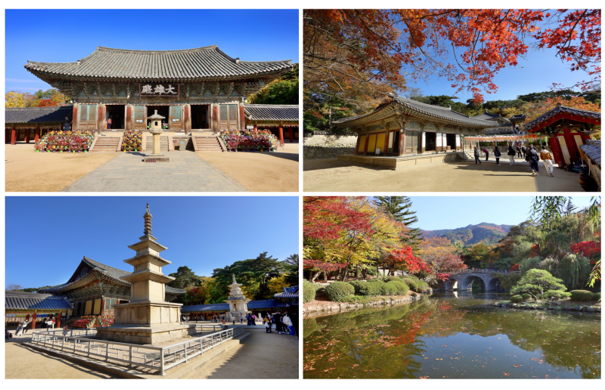Recent searches
Top keywords
# estival #mountain #island #food #korean food #history #history museum #beach #nature #dramaRecent searches
Top keywords
# estival #mountain #island #food #korean food #history #history museum #beach #nature #drama
Autumn in Korea offers one of nature’s most enchanting shows. This season, which lasts from September to November, adorns all corners of the country with red, orange and golden leaves. The splendor of the leaf fall is especially dazzling in mountainous areas such as Seoraksan, Naejangsan and Jirisan. The freshness that comes with the cooling air draws both locals and tourists outside to parks and temple gardens. In traditional Korean villages and palaces, historical textures blend with the colors of autumn, creating a sense of time travel. Autumn in Korea is a season that everyone should see with its riot of color and peaceful atmosphere offered by nature.
1.SEOUL
Seoul Forest
Seoul Forest is a large and diverse city park located in Seoul, the capital of South Korea. Spread over an area of 1,200 acres, this park is a popular rest and recreation area for both locals and tourists. Opened to the public in 2005, Seoul Forest consists of five main areas: Culture and Art Park, Ecology Forest, Riverside Park, Reclamation Park and Exotic Botanical Garden. These areas offer a wide range of opportunities for visitors who want to spend time in nature, do sports, participate in art activities and explore the vegetation.
The Ecology Forest area of the park is home to many wildlife species such as deers, otters and various bird species. In this section, visitors can observe natural life and relax in an environment harmonious with nature. The Culture and Art Park offers visitors a cultural experience by hosting various art events and exhibitions. In addition, the bicycle paths, walking trails and picnic areas in Seoul Forest make the park an ideal place to escape from the stress of city life. Seoul Forest is a green oasis in the heart of Seoul, offering an opportunity to connect with nature amidst modern city life.
Address: Ttukseom-ro 273, Seongdong-gu, Seoul, South Korea
Website: parks.seoul.go.kr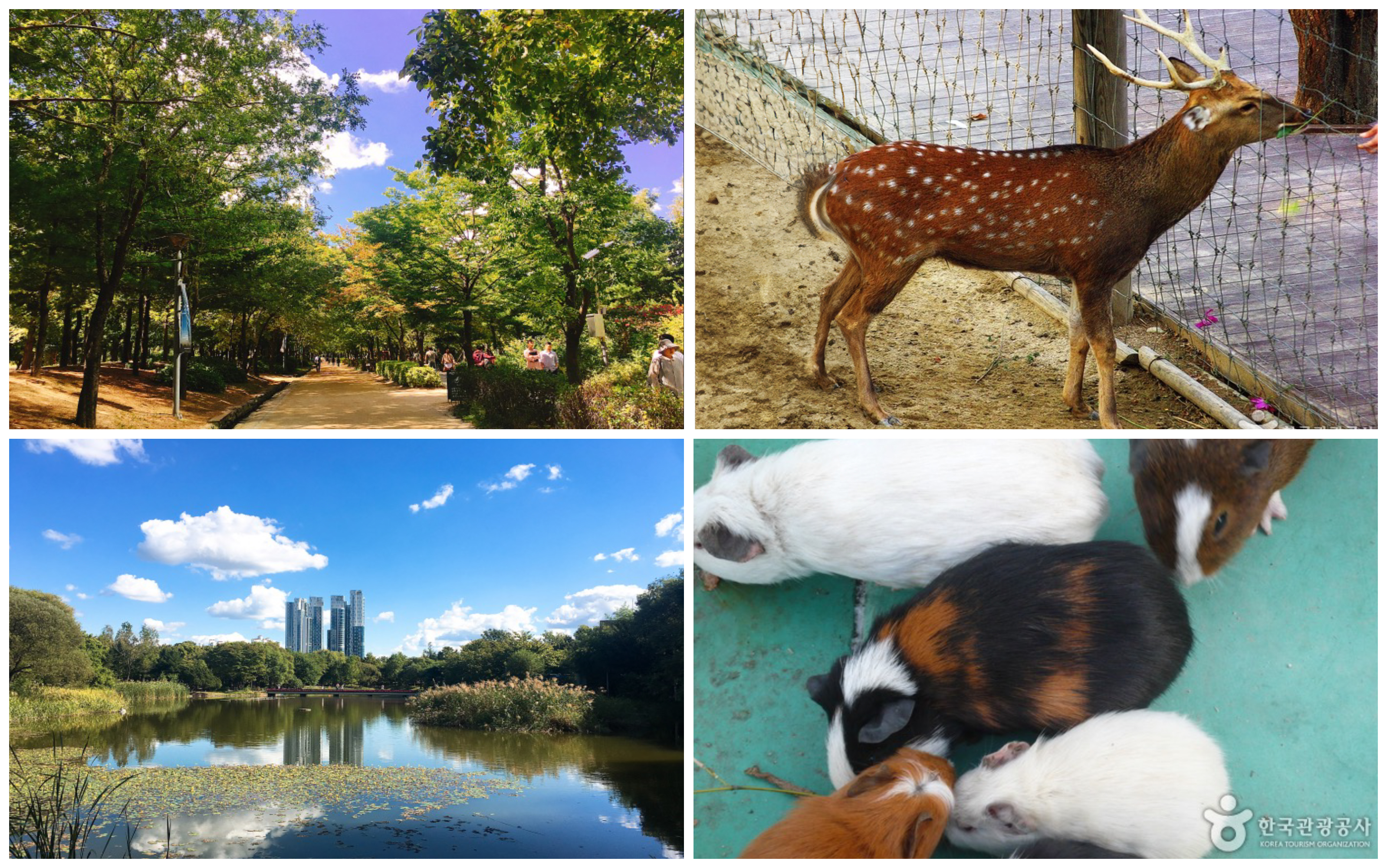
Haneul Park
Haneul Park is a large green area located north of the Han River in Seoul, the capital of South Korea. The park is part of the World Cup Park complex in western Seoul and was transformed to host the 2002 FIFA World Cup. Previously a landfill, the area was rehabilitated and transformed into its current state through an environmentally friendly project by the Seoul Municipal Government. Haneul Park is named for its "Sky Park" meaning "Sky Park" and is named after the park's elevated location and the hilltop offering sweeping views.
The park is a popular destination for nature lovers and photography enthusiasts. It offers visitors a peaceful environment with its walking paths, wide lawns and numerous species of plants and flowers. Autumn, especially, is one of the best times to visit the park, as the magnificent landscape of pampas grasses is seen. The park organizes many educational programs and events to raise environmental awareness, and as a result, it continues to be a major attraction for both locals and tourists.
Adress: 95 Haneulgongwon-ro, Mapo-gu, Seoul
Website: parks.seoul.go.kr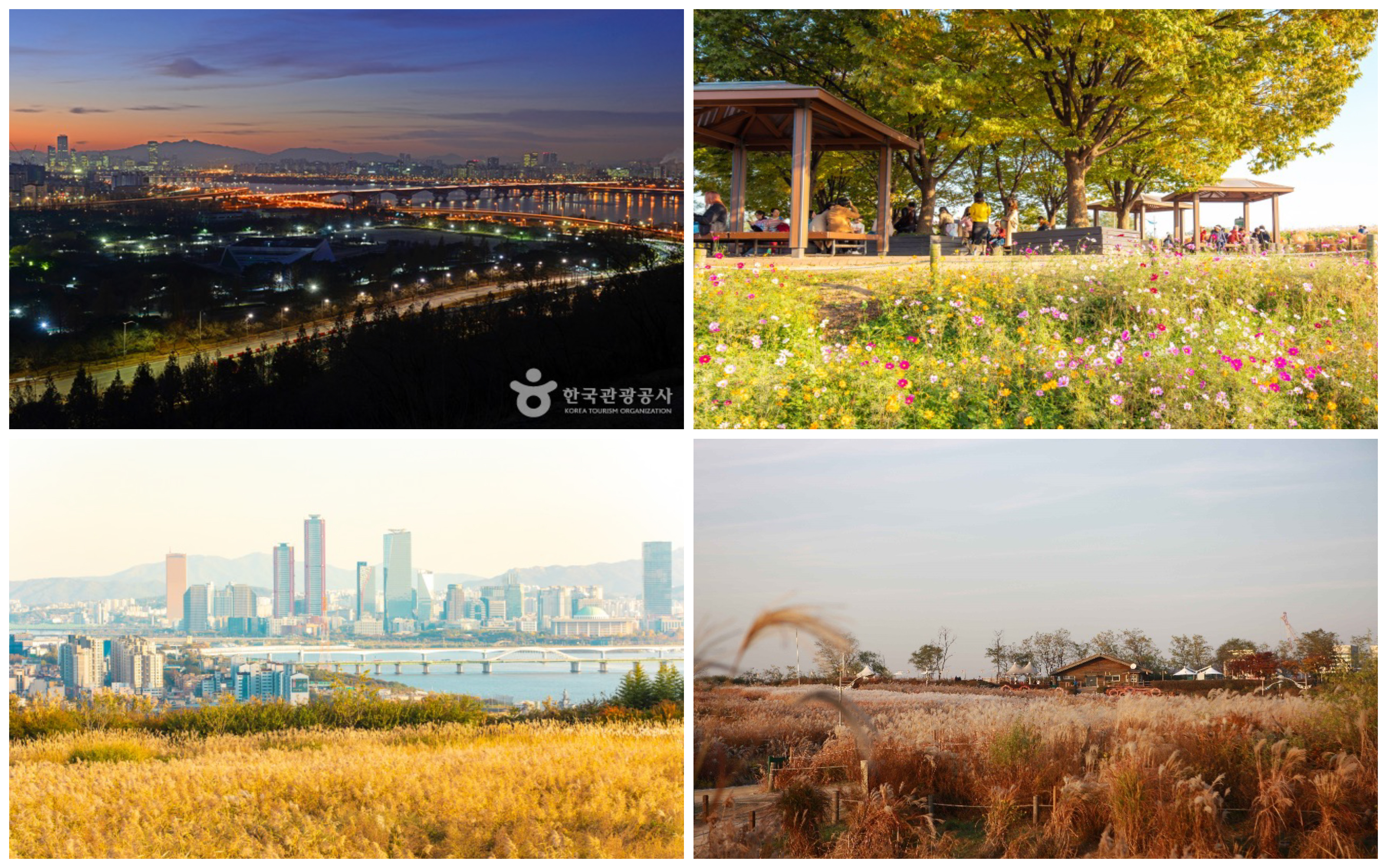
Changdeokgung Palace
Changdeokgung Palace is a historical royal palace located in Seoul, the capital of South Korea, and was built in 1405 during the Joseon Dynasty. The palace is located in the center of Seoul and served as one of the most important royal residences of the Joseon period. Changdeokgung is particularly famous for its natural landscape, which distinguishes it from other Joseon palaces. The Huwon (Secret Garden), located behind the palace, offers a landscape enriched with flowers, ponds, and natural walking paths, providing visitors with a peaceful escape.
Changdeokgung Palace was declared a UNESCO World Heritage Site in 1997, and this designation emphasizes the historical and cultural importance of the palace. The palace is considered one of the finest examples of traditional Korean architecture and garden design, and is particularly notable for its spacious courtyards and elegant architecture. The palace's preserved structures and aesthetic arrangement are considered an important historical resource reflecting the royal life and culture of the Joseon period. Every year, many tourists and history enthusiasts visit Changdeokgung to see its unique heritage.
Address: 99 Yulgok-ro, Jongno-gu, Seoul
Website: www.knps.or.kr
2. GYEONGGI-DO
Gwangju Hwadam Botanical Garden
Gwangju Hwadam Botanical Garden is a botanical garden located in Gwangju, South Korea, and is notable for its natural beauty. Established in 2006, this large green area offers visitors a rich natural experience with its variety of plant species and landscaping. Since the garden is located in a mountainous area, it offers visitors panoramic city views and the opportunity to enjoy the natural environment. The different thematic areas in the garden offer different beauty in each season; colorful flowers in spring, green vegetation in summer, and vibrant leaf colors in autumn.
Hwadam Botanical Garden also plays an important role in environmental education and nature conservation. Various educational programs and events organized in the garden aim to inform both locals and visitors about nature conservation and plant diversity. In addition, the botanical garden offers visitors a peaceful environment with walking paths, ponds, and relaxation areas. Visitors can spend time in touch with nature here and enjoy discovering the natural beauties of Gwangju.
Address: 278-1 Docheogwit-ro, Gwangju-si, Gyeonggi-do
Website: www.hwadamsup.com 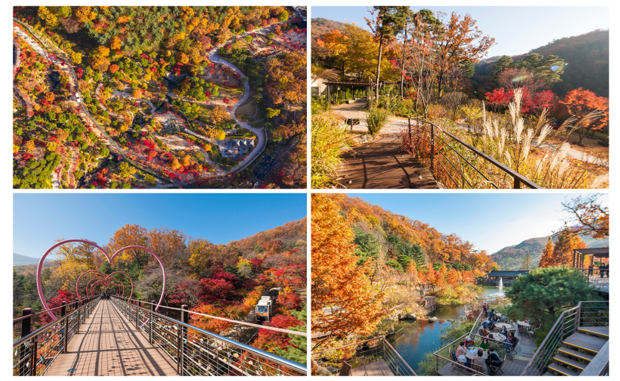
3. JEOLLABUK-DO
Naejangsan Uhwajeong Pavilion
Naejangsan Uhwajeong Pavilion, Güney Kore'nin Jeolla-do bölgesindeki Naejangsan Dağı'nın eteklerinde yer alan tarihi bir yapıdır. 17. yüzyılda inşa edilen bu pavyon, Joseon Hanedanlığı döneminin önemli kültürel miraslarından biridir. Uhwajeong, adıyla da uyumlu olarak, çevresindeki doğal güzellikleriyle ünlüdür; özellikle sonbaharda renk değiştiren yapraklar ve kışın karla kaplı dağ manzarası, pavyonu ziyaretçiler için göz alıcı bir cazibe merkezi haline getirir. Geleneksel Kore mimarisinin güzel bir örneği olan bu yapı, ahşap işçiliği ve zarif detaylarıyla dikkat çeker.
Uhwajeong Pavilion, sadece tarihî bir yapı olmanın ötesinde, bölgenin kültürel ve doğal değerlerini bir araya getiren önemli bir mekandır. Pavyon, Naejangsan Dağı'nın eteklerinde yer aldığından, dağa tırmanan yürüyüşçüler için ideal bir dinlenme noktası sunar. Ayrıca, çevresindeki doğal güzellikler ve mevsimlik değişiklikler, her ziyaretçiye farklı bir deneyim yaşatır. Uhwajeong, Kore kültürünü ve doğasını deneyimlemek isteyenler için hem tarihi hem de estetik açıdan zengin bir ziyaret noktası olarak öne çıkar.
Adsres: 936, Naejangsan-ro, Jeongeup-si, Jeonbuk-do
Website: naejang.knps.or.kr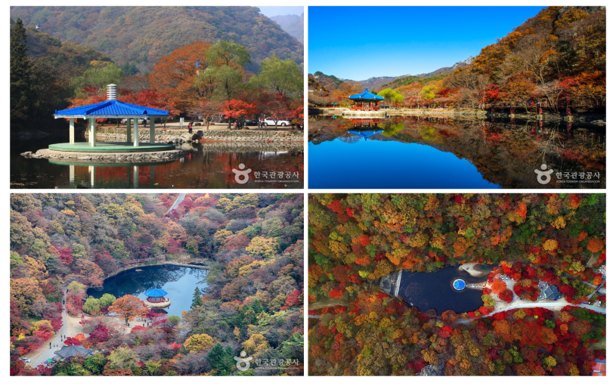
4. GAGWON-DO
Wondae-ri Birch Forest in Inje
Wondae-ri Pear Forest is known as a fascinating natural area located in Inje County, South Korea. This forest, especially famous for its white pear trees, is one of the largest pear forests in the region. Wondae-ri offers rich biodiversity and allows visitors to explore natural beauties along hiking trails. The paths in the forest offer impressive views and a peaceful atmosphere, especially in autumn and spring, making it an attractive destination for both hikers and photographers.
The region is also home to a variety of bird and other wildlife species, offering nature lovers a rich ecosystem experience. Wondae-ri Pear Forest is a perfect place for visitors who want to relax and be alone with nature. The natural beauty and cooling shadows of the forest provide an ideal escape for those who want to get away from the noise of city life.
Adres: 760 Jajangnamusup-gil, Inje-gun, Gangwon-do
Website: www.forest.go.kr
Seoraksan
Seoraksan is one of the highest and most impressive mountains in South Korea, located in Gangwon-do. With an elevation of 1,708 meters, Seoraksan is the country’s third highest peak, and is a popular destination for mountain climbers and nature lovers. The mountain is known for its unique granite peaks, deep valleys, and rich vegetation. Seoraksan’s various hiking trails offer varying levels of difficulty for both experienced climbers and those who want to do lighter hikes. In spring and summer, it offers dazzling views with green forests and colorful flowers, and in autumn, with vibrant leaf colors. In winter, it turns into a white fairyland with snow-capped peaks and frozen waterfalls.
Seoraksan is also located within Seoraksan National Park, which is considered one of Korea’s most important nature reserves. The park’s historic temples, especially the Sinheungsa and Baekdamsa, offer visitors both a spiritual experience and the opportunity to explore the region’s cultural heritage. Seoraksan's natural beauty, rich flora and fauna diversity are important elements that support the park's biodiversity and make it attractive to nature lovers. For both adventure seekers and peace seekers, Seoraksan offers an exploration full of fascinating natural landscapes and rich cultural experiences.
Adres: 1 Daecheongbong-gil, Yangyang-gun, Gangwon-do
Website: www.knps.or.kr
Ginko Grove in Hongcheon
Ginkgo Grove is a natural area located in Hongcheon, South Korea, known for its impressive beauty, especially in autumn. This forest is home to a large collection of ginkgo trees, and each year in the autumn season, the leaves of the trees turn yellow, creating a spectacular view. Ginkgo Grove offers visitors a magnificent feast of colors during this season and provides a refreshing atmosphere along the walking paths. The golden carpets formed by the ginkgo trees create an ideal environment for photographers and nature lovers.
The area attracts attention not only with its visual beauty, but also with its natural and cultural values. Ginkgo Grove helps preserve the ecosystem and biodiversity in the region, while offering visitors an experience of being one with nature. When combined with Hongcheon’s other natural and cultural riches, Ginkgo Grove provides an attractive escape and a peaceful nature getaway for both locals and tourists.
Adres: 686-4 Gwangwon-ri, Nae-myeon, Hongcheon-gun, Gangwon-do
Website: www.hongcheon.go.kr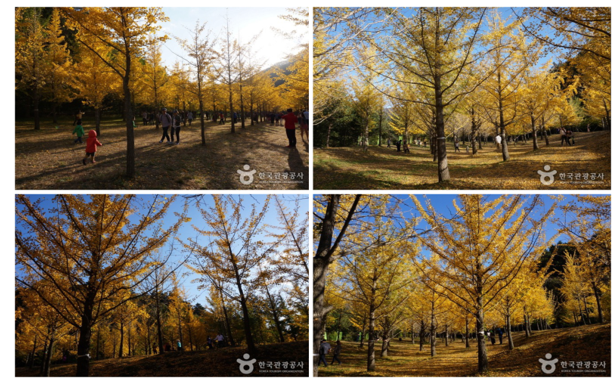
5. GYEONJU
Bulguksa Temple
Bulguksa Temple is a historic Buddhist temple located in Gyeongju, South Korea, and is considered one of the country's most important cultural heritage sites. Built in 774, the temple dates back to the Silla Kingdom and is one of the finest examples of traditional Buddhist architecture in Korea. Bulguksa is known for its elegant wooden structures, detailed stone carvings, and impressive pagodas. The temple is a UNESCO World Heritage Site and is considered an important representative of Buddhist art and architecture. The Dabo-tap and Seokgatap pagodas inside Bulguksa are known as the temple's landmarks, reinforcing its historical and cultural significance.
Bulguksa Temple is not only architecturally significant, but also spiritually significant. The temple is an important center for Buddhist rituals and ceremonies, and is visited by thousands of visitors each year. The natural beauty and historical structures surrounding the temple offer visitors both a spiritual experience and a historical exploration. As a place that bears deep traces of Korean culture and history, Bulguksa stands out as a fascinating destination for both local and foreign tourists.
Adres: 385, Bulguk-ro, Gyeongju-si, Gyeongsangbuk-do
Website: www.bulguksa.or.kr
www.templestay.com
